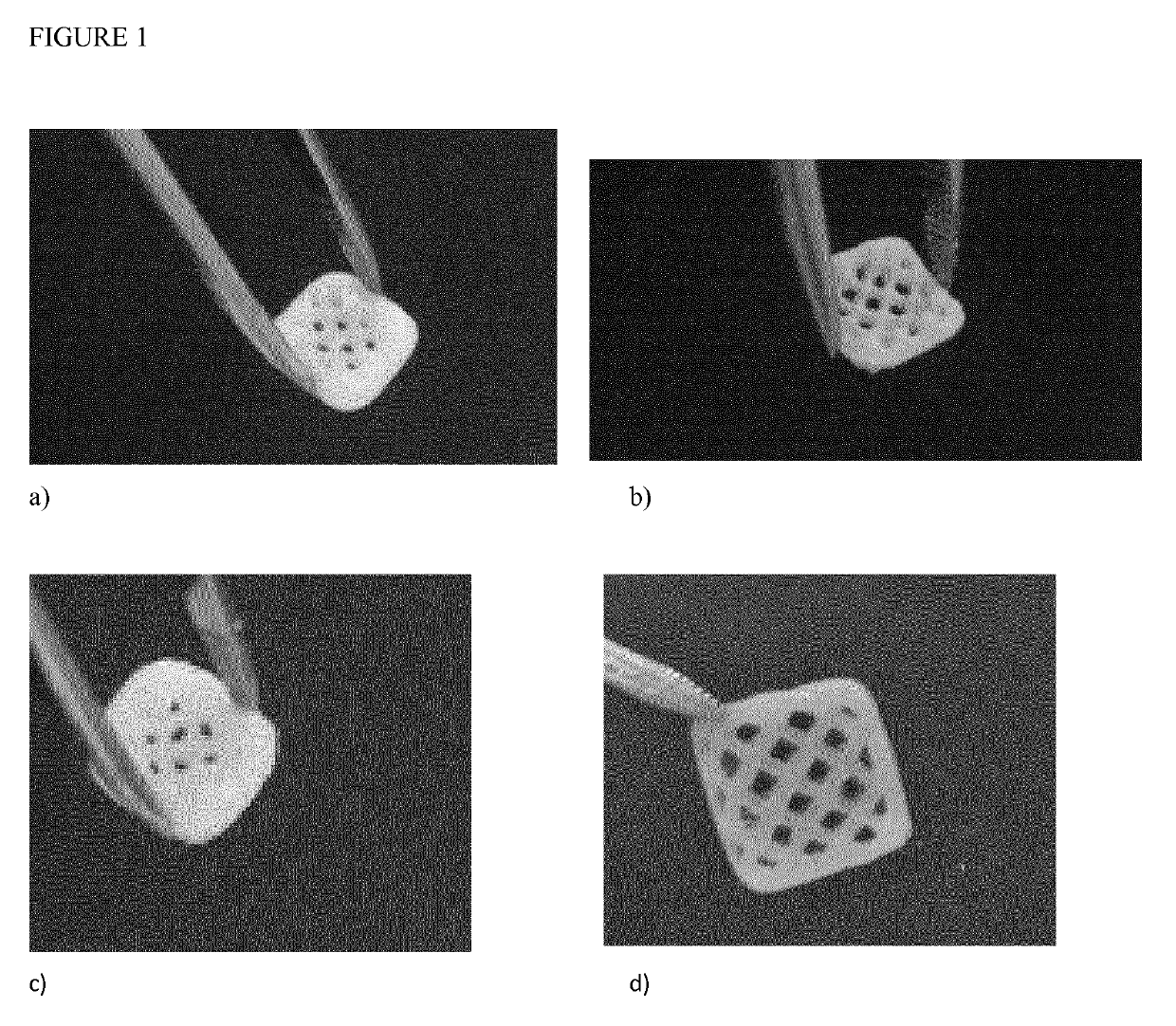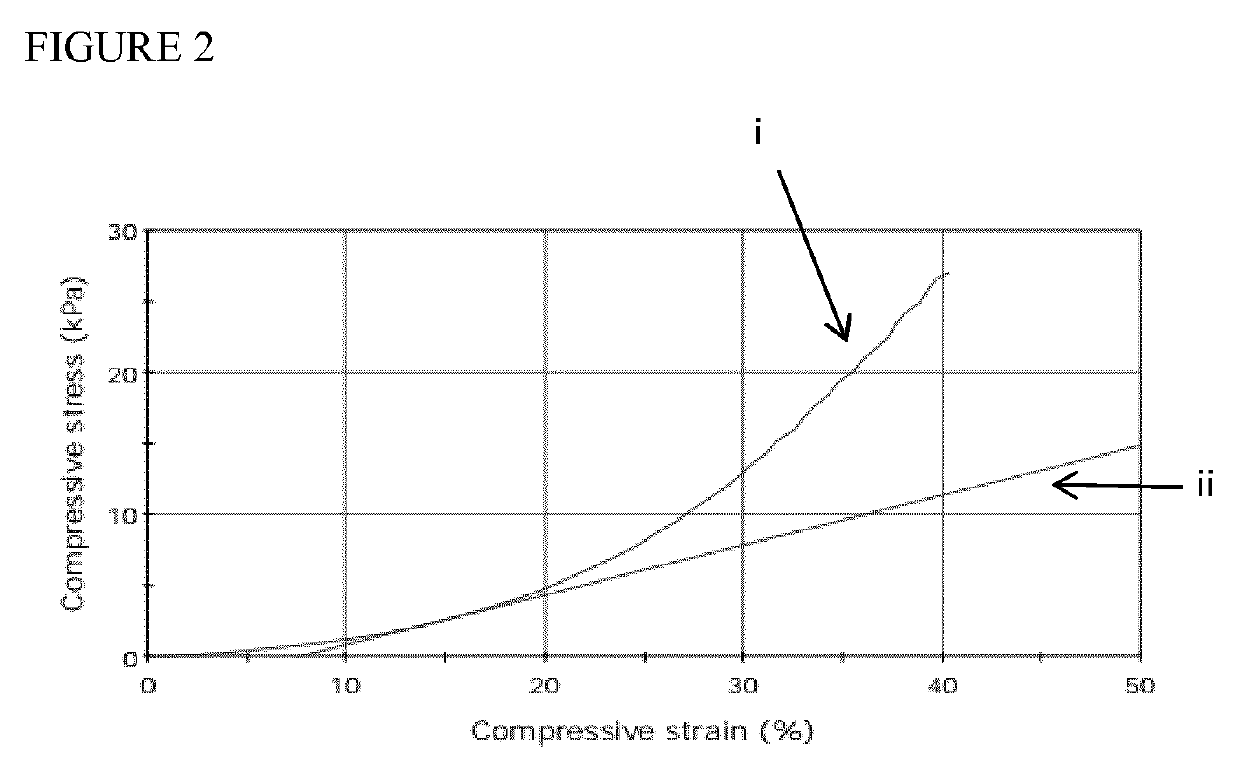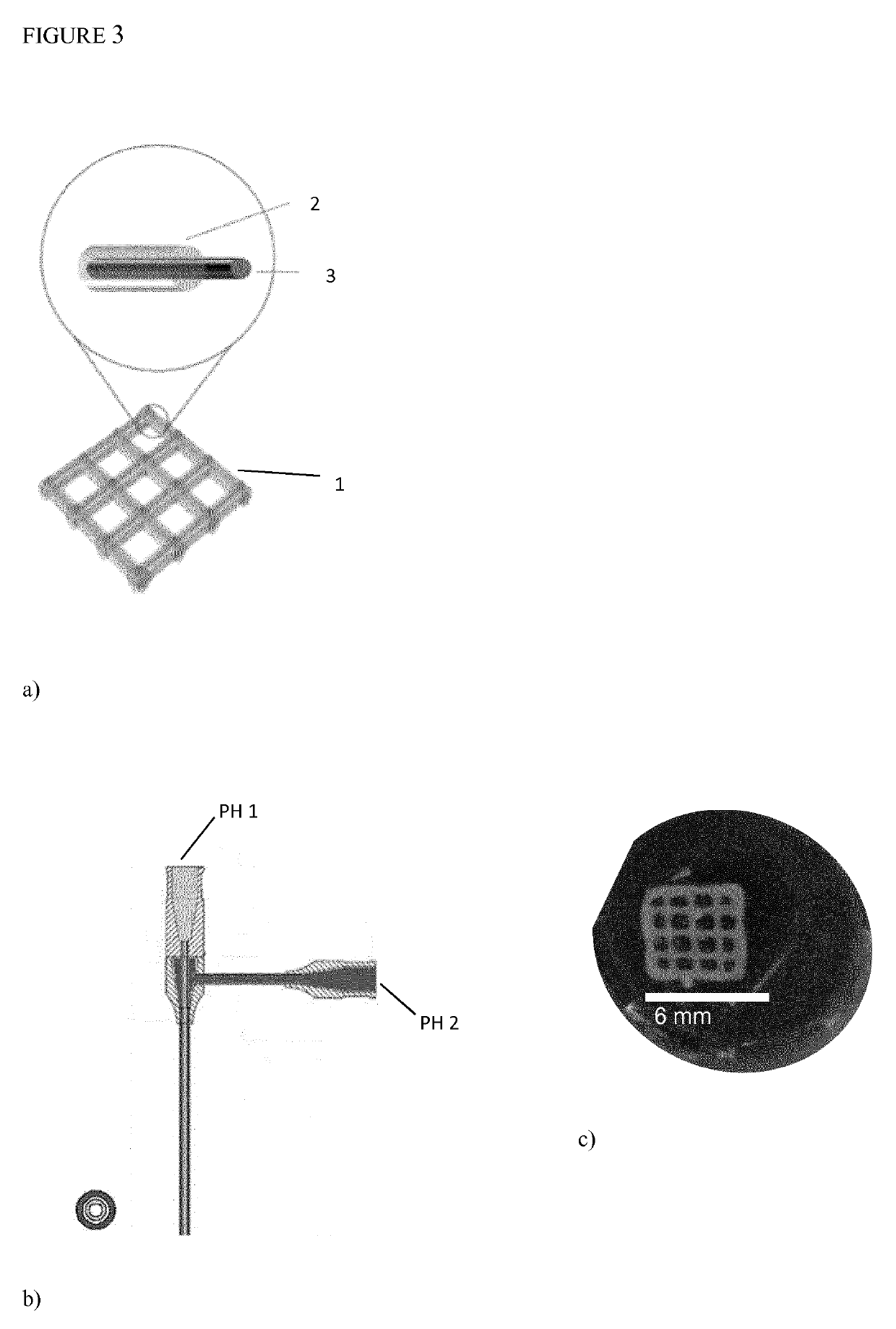Preparation and Applications of 3D Bioprinting Bioinks for Repair of Bone Defects, Based on Cellulose Nanofibrils Hydrogels with Natural or Synthetic Calcium Phosphate Particles
a bioink and cellulose nanofibril technology, applied in the field of 3d bioprinting, bioinks for bioprinting, constructs and tissues prepared by bioprinting, can solve the problems of large defects that cannot be repaired, titanium plates being exposed through the skin, pain in patients, etc., to achieve bone formation and repair large defects.
- Summary
- Abstract
- Description
- Claims
- Application Information
AI Technical Summary
Benefits of technology
Problems solved by technology
Method used
Image
Examples
example 1
Preparation and Evaluation of Bioinks
[0064]Granules of β-tricalcium phosphate (β-TCP) 1.4-2.8 mm particle size were grinded in a mechanical grinder to a powder and finally homogenized using a hydraulic press. Other Calcium phosphates from different sources were compared. The grinding process was designed to provide the size of the particles to be below 200 microns as determined by sieving process. Nanocellulose fibril hydrogel was prepared by homogenization of Bacterial Cellulose pellicle which was purified according to protocols published elsewhere [8]. Cellulose nanofibrils isolated from wood have also been evaluated. In order to provide good crosslinking, between 10-20% of alginate based on dry weight of cellulose nanofibrils was added. A typical bioink without mineral phase contains between 2-3% dry weight cellulose nanofibrils and alginate mixture. Different mixing devices were tested. FIG. 1 shows a mixing device which is constructed by combining two cartridges. Mixing was ach...
example 2
3D Bioprinting of Implantable Constructs
[0065]Very high viscosity of Calcium filled bioinks resulted in much higher pressure necessary to get printed constructs. In order to use bioinks with cells the core shell structures (1) were designed as shown in FIG. 3a. One possible design is to use Calcium filled bioink as a core and cell filled nanocellulose bioink as a shell. In FIG. 3a, the structure 1 comprises an outer shell 2 and an inner core 3. The outer shell may contain nanocellulose bioink and mesenchymal stem cells, and the inner core 3 may contain 20% β-TCP / nanocellulose bioink. Opposite can be also printed. In order to be able to print such structures coaxial needle is installed, see FIG. 3b. The bioink of the inner core is introduced at PH 1, and the bioink of the outer shell is introduced at PH 2. Prior to bioprinting nanocellulose bioink in DMEM medium solution was prepared. Confluent human adipose derived mesenchymal cells AD-MSCs were washed with 6 mL DPBS and then incuba...
example 3
3D Printing Using Human Bone Powder as a Source
[0067]Example 1 and 2 is repeated using human bone powder (LifeNet Health (ReadiGraft Demineralized Cortical Particulate with grind size 125-1000 microns)) instead of the other materials of Example 1 and 2. The powder is sieved before use to obtain the desired particle size (less than 400 microns, or less than 200 microns). The human bone powder is used with the same parameters as for the β-TCP-particles. The same, promising results are expected, i.e. excellent printability with high fidelity.
PUM
| Property | Measurement | Unit |
|---|---|---|
| Fraction | aaaaa | aaaaa |
| Size | aaaaa | aaaaa |
| Size | aaaaa | aaaaa |
Abstract
Description
Claims
Application Information
 Login to View More
Login to View More - R&D
- Intellectual Property
- Life Sciences
- Materials
- Tech Scout
- Unparalleled Data Quality
- Higher Quality Content
- 60% Fewer Hallucinations
Browse by: Latest US Patents, China's latest patents, Technical Efficacy Thesaurus, Application Domain, Technology Topic, Popular Technical Reports.
© 2025 PatSnap. All rights reserved.Legal|Privacy policy|Modern Slavery Act Transparency Statement|Sitemap|About US| Contact US: help@patsnap.com



